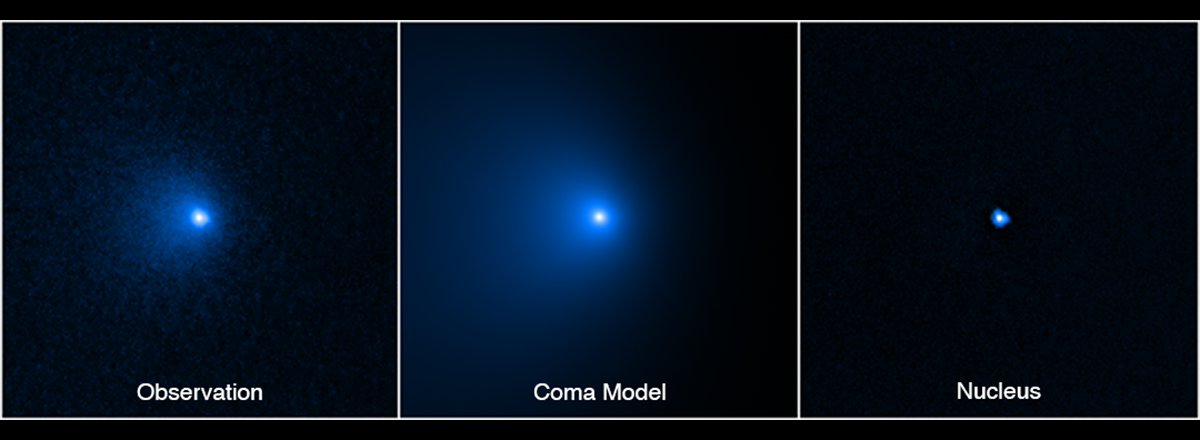Hubble Determines the Size of the Largest Icy Comet Nucleus
Comet C/2014 UN271 was discovered by astronomers Pedro Bernardinelli and Gary Bernstein while analyzing images taken as part of the DES (Dark Energy Survey) from 2013 to 2019.

The Hubble Space Telescope has measured the nucleus of comet C/2014 UN271 (Bernardinelli-Bernstein). Its data confirmed that it is the largest comet in the history of astronomy.
Comet C/2014 UN271 was discovered by astronomers Pedro Bernardinelli and Gary Bernstein while analyzing images taken as part of the DES (Dark Energy Survey) from 2013 to 2019.
The find immediately attracted the attention of the scientific community. First, C/2014 UN271 came from the Oort cloud. And secondly, immediately after the discovery, it became clear that C/2014 UN271 is a very large object. Initially, astronomers even thought it might be a dwarf planet, but later they still managed to find signs of its cometary activity.
To determine the size of comet C/2014 UN271, the researchers used the Hubble Space Telescope. This proved to be quite a challenge since the comet is too far away from Earth, so even the technical capabilities of the orbiting observatory are not enough to directly examine its nucleus. The situation is further complicated by the coma – the shell of dust and gas surrounding the nucleus of C/2014 UN271.
Therefore, the researchers created a computer model of the coma, compared it with Hubble images, and then "subtracted" the glow of the coma from them, leaving only the light from the nucleus. To improve accuracy, scientists also used data from the ALMA radio telescope complex.
As a result, scientists obtained the following estimate: the diameter of the nucleus of comet C/2014 UN271 is 135 km, and its mass is 500 trillion tons. Thus, C/2014 UN271 is the largest comet astronomers have ever observed.

